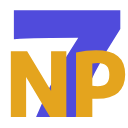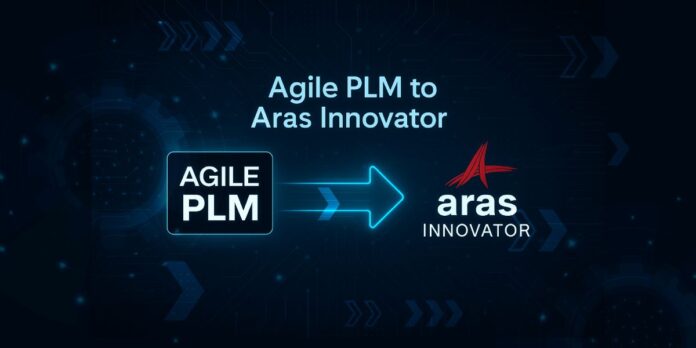After working for over a decade with Oracle Agile PLM, our team has gained deep experience across industries like hi-tech, semiconductors, medical devices, automotive, and electronics. We’ve been part of full-scale implementations, global rollouts, data migrations, validations, and post-go-live support.
Now, with Oracle formally announcing the end of Premier Support for Agile PLM by 2027, the shift is clear: it’s time to evolve. For teams like ours who have relied on Agile to manage complex product cycles, this change feels like an industry-wide inflection point.
Aras Innovator has not only positioned itself as one of the best PLM systems in the market, but one that can challenge the rigid models of traditional PLM software.
But as we transition to Aras PLM, we’re not just starting fresh. We’re carrying with us hard-earned lessons from years of Agile work that will help us implement Aras with more clarity, precision, and strategic foresight.
Here are the ten key lessons we’re bringing into the next phase of our PLM strategy.
1. Strong foundations matter
A building is only as strong as its foundation. This adage holds true for product lifecycle management as well. In Agile, we spent years refining item classes, workflows, roles, and access privileges. Approaching PLM solutions with this discipline gave us stability, scalability, and minimal disruption.
That same discipline will guide our Aras implementations. Aras PLM’s strength lies in its capacity to mold business needs while still maintaining structural clarity. Whether it’s managing access privileges or modeling workflows, the more thoughtful the foundation, the smoother the rollout.
2. Business alignment is everything
Agile taught us that PLM is never just a technical tool; rather, it’s deeply tied to business process alignment. Aras offers even more flexibility, but without clear business input, flexibility can become a risk instead of a strength. Without alignment between the two, even the most advanced PLM software can fall flat. Therefore, what sets successful transitions apart is a firm business leadership that defines outcomes first and systems second.
3. Early stakeholder engagement saves time
In our every successful Agile deployment, early buy-in from engineering, quality, and manufacturing teams made all the difference. When these teams had a say in shaping the system, they were more likely to support and adopt the PLM solutions.
We’ll follow the same practice in Aras to drive faster adoption and fewer revisions. In fact, with Aras’ visual collaboration features, we hope to engage stakeholders more interactively and as early as possible.
Here are some of the best techniques to engage with stakeholders effectively:
- Allocate enough time for effective engagement with every team. Different stakeholders have different priorities and levels of involvement. Listening to them helps you understand a range of viewpoints.
- Discerning patterns and themes across stakeholder feedback reveals some real insights. Individual opinions matter, but grouping those themes often gives the bigger picture.
- If you want to engage PLM stakeholders effectively, then start paying attention to your listening. Focus on understanding engineering, quality, or supply chain teams on their own terms and with their own perspectives.
- Ensure consistency of communication and information. Make sure that one department isn’t hearing a different story from another. Mixed messages lead to confusion, which can stall or even derail progress.
4. Data migration is never just a technical task
Data migration is the iceberg under every PLM transition. Moving data from legacy systems like ShareFile or Arena into Agile showed us how complex and business-critical accurate data migration is. Businesses have years of accumulated data, and you must determine what’s worth migrating, what needs cleansing, and what must be restructured for future use. If not properly handled, data migration can prolong the transition process and incur additional expenses.
As we prepare Agile-to-Aras migrations, we’re applying the same rigor in planning, cleansing, validating, and mapping data.
5. Training drives adoption
Years of experience with Agile have shown us that a structured training regimen pays dividends in long-term adoption. No matter how good the system is, if users aren’t confident using it, adoption stalls. From CRPs to UAT to hands-on guides, we plan to carry our structured training approach forward with Aras. Aras’ role-specific tutorials and expansive documentation are useful to educate the team on the PLM system.
Moreover, our time with Agile has also taught us that training should be phased, practical, and closely tied to real-world tasks for maximum learning.
6. Customization needs a roadmap
Every customization in PLM solutions has a cost. Agile PLM allows for some level of customization but often requires careful handling to avoid future upgrade issues. Without a roadmap, customizations in Agile could lead to unsupported features and upgrade nightmares.
With this experience from Agile, we’ll keep in mind that while Aras gives us more freedom through AML (Aras Markup Language), it also needs a strategy. Every enhancement should serve a long-term goal, not just a short-term need. Therefore, regardless of the flexibility of your PLM system, governance and restraint protocols are still necessary for smooth customization.
7. Testing is not optional
Agile PLM taught us that testing is not just a checkbox that you need to fill. Whether it’s regression testing or validating change workflows, testing was key to stable Agile PLM environments. That mindset continues in Aras, especially with the platform’s flexibility and potential for deep customization.
Aras supports automated testing through its Testing Automation Framework (TAF), which greatly helps in simulating and validating regular testing quickly.
8. Collaboration makes or breaks projects
Our Agile PLM projects consistently succeeded when there was continuous collaboration and open communication across all teams. Involving stakeholders early and maintaining their input throughout, especially during requirement finalization and solution walkthroughs, proved critical.
We plan to carry this forward in our Aras implementations to ensure alignment, clarity, and successful delivery. The Aras PLM platform is built for collaboration with its visual process mapping and document sharing tools. But tools are just a means to an end. What guarantees teamwork is a culture that prioritizes shared ownership.
9. Documentation pays off later
Over the years, we realized that good documentation is the unsung hero behind successful PLM adoption. Many issues were solved faster just because we kept detailed functional specs, validation protocols, and config notes in Agile.
We’re applying the same discipline in Aras to create reusable assets. With Aras’ technical documentation tools and change control features, teams can create living documents that evolve with the system. The aim is to make documentation an integral part of project management, not an afterthought dusted off only during compliance reviews.
10. Continuous improvement over one-time delivery
With Agile, we learned that no implementation is ever truly ‘done.’ Business needs evolve. Systems need to keep up. Teams that understand the need to evolve with time are already planning their migration from Agile to Aras approaches, ensuring that their training strategies align with the flexibility and demands of the new system.
We plan to do the same by approaching Aras as a living platform that should continuously improve through feedback, iteration, and enhancements. Aras acknowledges this with a platform built for continuous improvement. Its upgrade paths, customization overlays, and community-driven enhancements encourage iteration.
Closing thoughts
The shift to Aras Innovator PLM will be a new chapter for many Agile users. However, it’s not a rejection of the past. While we’re excited about the shift to Aras PLM, we don’t see it as a reset. Instead, it’s a continuation of the journey we began with Agile PLM; just on a more modern, flexible platform.
As Aras steps forward, companies have a chance to build PLM systems that reflect today’s realities with distributed teams, faster development, and stricter regulatory compliance. With the experience behind us and new possibilities ahead, we’re ready to build even better PLM solutions for the next decade.
Xavor is a certified Oracle Agile and Aras Innovator PLM partner. Our team can accelerate your move from Agile to Aras with guaranteed results. We ensure with our simplified migration techniques that your PLM system is smarter, faster, and with fully preserved data integrity.
If you are planning your Agile-to-Aras migration, drop us a line at [email protected] to schedule a free consultation session.


